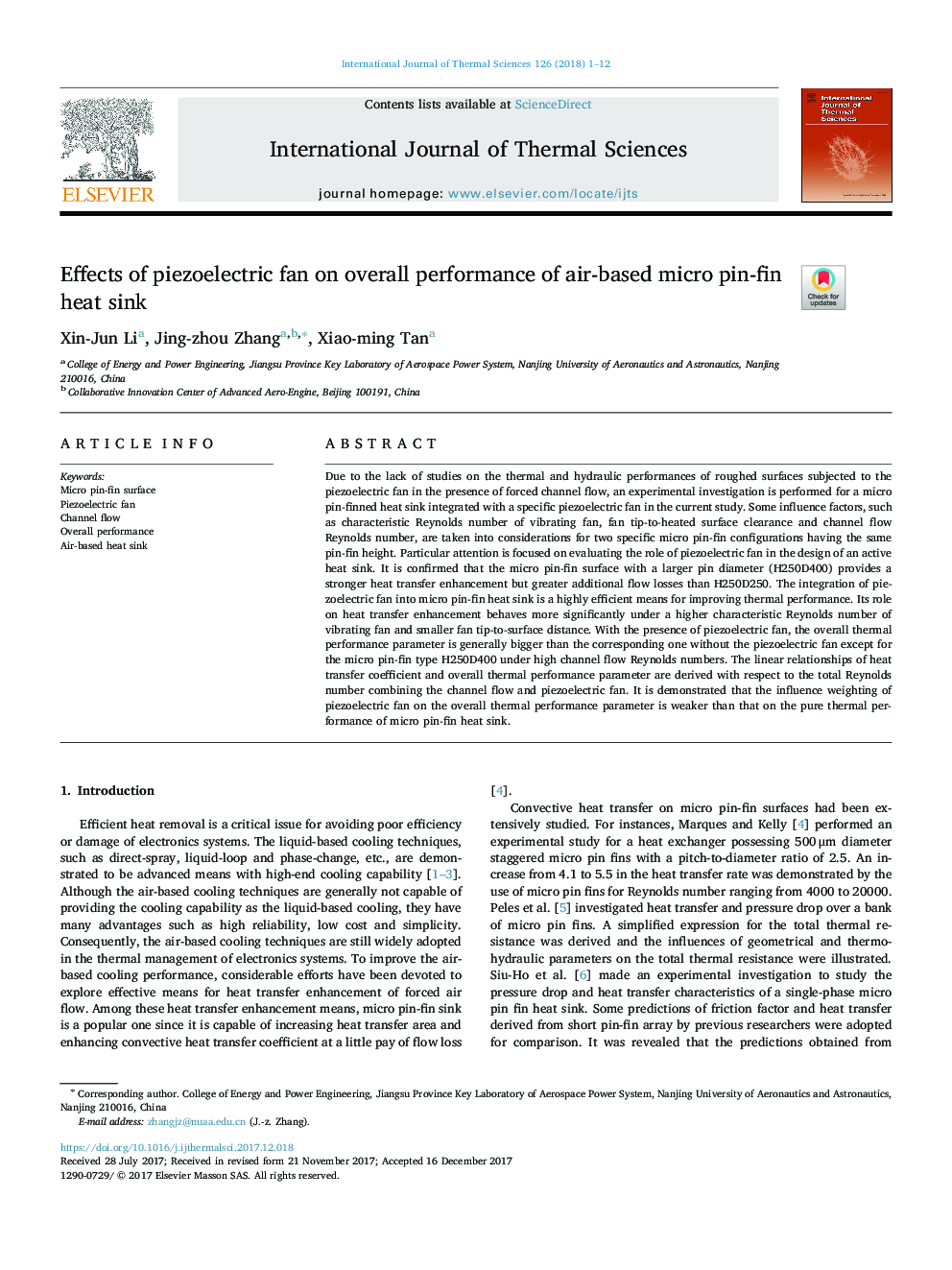| Article ID | Journal | Published Year | Pages | File Type |
|---|---|---|---|---|
| 7060783 | International Journal of Thermal Sciences | 2018 | 12 Pages |
Abstract
Due to the lack of studies on the thermal and hydraulic performances of roughed surfaces subjected to the piezoelectric fan in the presence of forced channel flow, an experimental investigation is performed for a micro pin-finned heat sink integrated with a specific piezoelectric fan in the current study. Some influence factors, such as characteristic Reynolds number of vibrating fan, fan tip-to-heated surface clearance and channel flow Reynolds number, are taken into considerations for two specific micro pin-fin configurations having the same pin-fin height. Particular attention is focused on evaluating the role of piezoelectric fan in the design of an active heat sink. It is confirmed that the micro pin-fin surface with a larger pin diameter (H250D400) provides a stronger heat transfer enhancement but greater additional flow losses than H250D250. The integration of piezoelectric fan into micro pin-fin heat sink is a highly efficient means for improving thermal performance. Its role on heat transfer enhancement behaves more significantly under a higher characteristic Reynolds number of vibrating fan and smaller fan tip-to-surface distance. With the presence of piezoelectric fan, the overall thermal performance parameter is generally bigger than the corresponding one without the piezoelectric fan except for the micro pin-fin type H250D400 under high channel flow Reynolds numbers. The linear relationships of heat transfer coefficient and overall thermal performance parameter are derived with respect to the total Reynolds number combining the channel flow and piezoelectric fan. It is demonstrated that the influence weighting of piezoelectric fan on the overall thermal performance parameter is weaker than that on the pure thermal performance of micro pin-fin heat sink.
Related Topics
Physical Sciences and Engineering
Chemical Engineering
Fluid Flow and Transfer Processes
Authors
Xin-Jun Li, Jing-zhou Zhang, Xiao-ming Tan,
